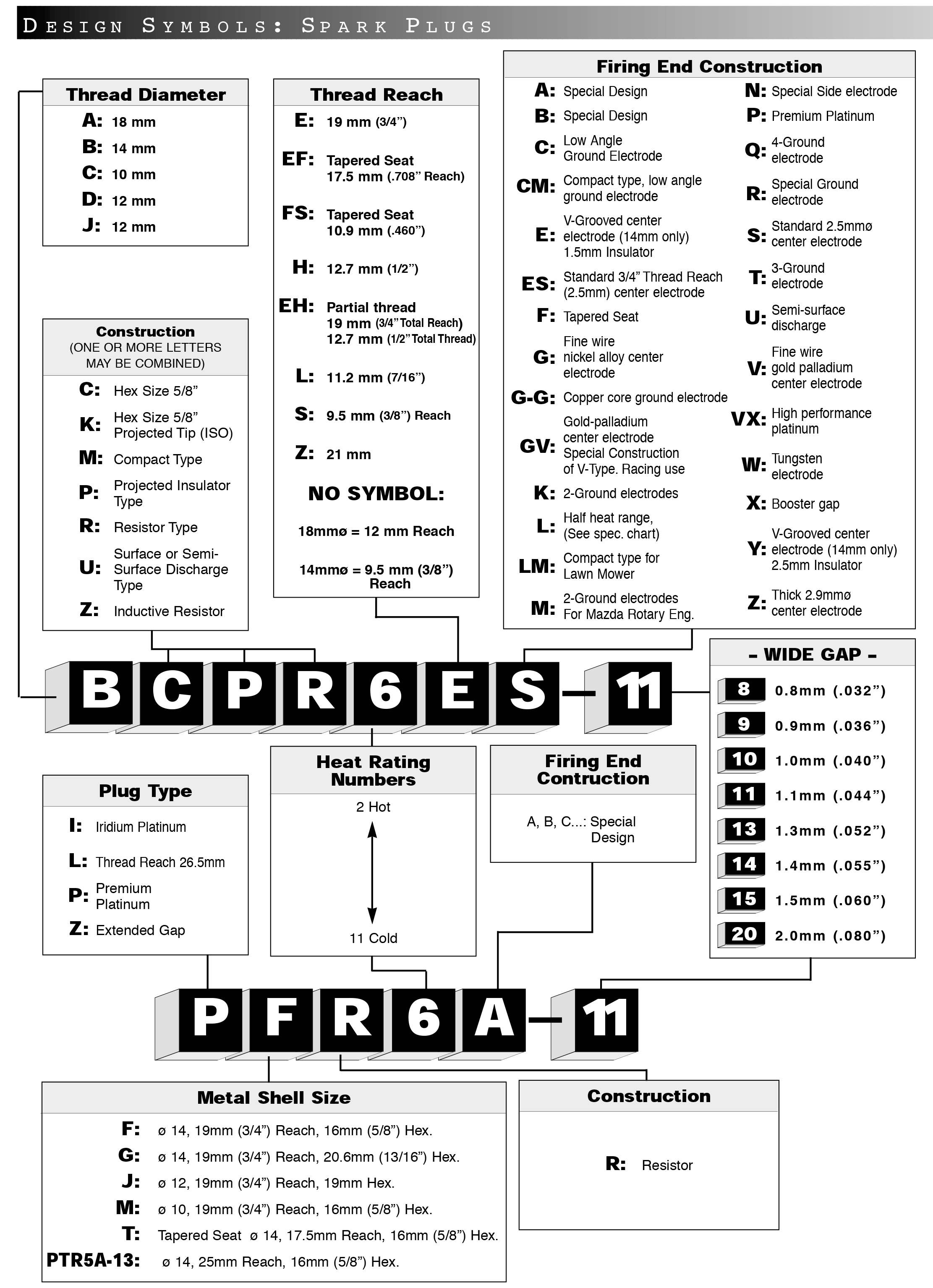The NGK Spark Plug Chart Explains All
My wife and I are mod-restoring a 1988 Honda Hawk GT (NT650). Its respectable patina is shadowed only by its design being way ahead of its time. The previous owner screened us, wanting to be certain that his daily rider was going to a good home and we're honored to have it.
“Newer spark plug design (iridium) is the only way to go. NGK labels their products based on preset measurements before packaging.”
The first thing I always do after buying a bike is sign up for its respective web forums. Such direct access, still new by modern world terms, makes going through my standard maintenance list much easier. With averaged opinions and my manual in tow, I find my way through each step, eventually arriving at my topic for this page, namely spark plugs.
Being a fan of both performance and longevity, newer spark plug design (iridium) is the only way to go. The Hawk GT site lists out a variety of compatible parts and accessories but nothing for iridium (yet). A combination effort between Google and Amazon proves successful.
Two days later, my two spark plugs (because the Hawk GT's a twin) arrive. I remove their elders only to find that she actually requires four plugs total. Four plugs? On a twin? That's news to me.
Two sparks per cylinder insures a more efficient explosion, thereby boosting the power and reliability of that explosion and giving what would otherwise be a weaker performing v-twin a torque boost even at higher speeds. This is one of the known downsides of the V, in this case semi-resolved with two plugs per cylinder, that once she gets goin', there's not much left to give.
A second pair of plugs land on my doorstep and it's wrenching time once more. Prior to installation, I check each of the individual plug's gap and discover them to be spot on right out of the box. How convenient!
I usually find myself adjusting the plug gap to its specified range's mathematic mean. If that range is between .034" and .038", I shoot for .036". Knowing that a bigger gap means a stronger spark, I leave my Hawk GT's new iridiums as they are on arrival (just below their maximum gap).
Installed and firing, the bike is running great and because the process was easier than usual, I opt to inform fellow forum members about quick-install NGK iridium spark plugs. After reading my post, an experienced member enlightens me to an NGK-specific fact that has galvanized my faith in their catalog. NGK labels their products based on preset measurements before packaging.
Here's how it works (click to enlarge) ...
By traversing the chart above, even if Amazon (or any other resource) warns you that "this doesn't fit your" [specified vehicle], you can have faith that it actually will based on careful selection. If your preferred gap size isn't listed, ordering the closest comparable measurement should work once adjusted. Useful hint: print the image and hang it in your garage!
What Other Companies Offer Charts Like This?
Charts such as this are certainly useful. What other companies use a similar approach? Are their products of equal quality? Your input is invited. Write an article!




